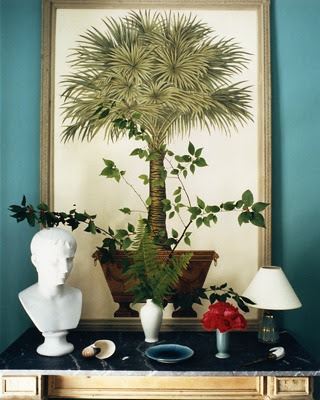
(Photo above of Ashley Whittaker's apartment, courtesy of Domino, Apr 07)
One of my all-time favorite wallpaper prints has resurfaced! "Zebrine", a blue and white zebra print by Rose Cumming, is featured in the April Domino in the home of designer Ashley Whittaker. I first spied this print in the Jan '05 issue of House Beautiful in an article on decorator Robin Bell's apartment. According to Bell, this fabulous print was first used at El Morocco, the legendary New York nightclub.
Glamorous pedigree aside, this print is certainly a stylish but bold statement. I love animal prints, but one has to use them with restraint. All other design elements of a room- furniture, artwork, and accessories- have to be toned down when paired with such a gutsy pattern. I think that both Whittaker and Bell accomplished that in both of their homes.

(Photo of Robin Bell's apartment, courtesy of House Beautiful, Jan '05)

























































